In the lush tropical rainforests of Southeast Asia, a rare and extraordinary plant dazzles with its mesmerizing colors and striking appearance. Strongylodon macrobotrys, commonly known as the Jade Vine or Emerald Vine, is a spectacular flowering plant that has captured the imagination of botanists, horticulturists, and nature enthusiasts alike. With its unique turquoise-blue blooms and remarkable adaptations, this climbing vine stands as a testament to the wonders of nature’s diversity.
Strongylodon macrobotrys images

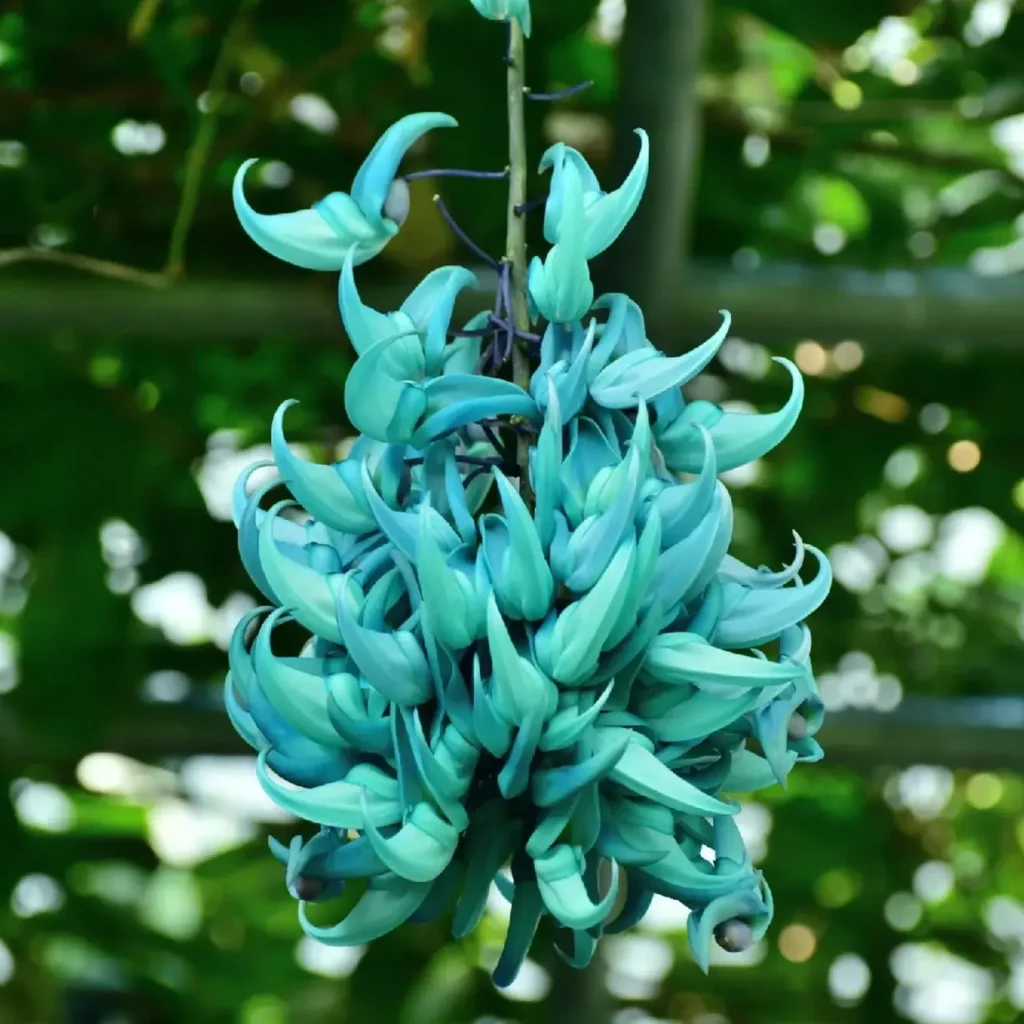
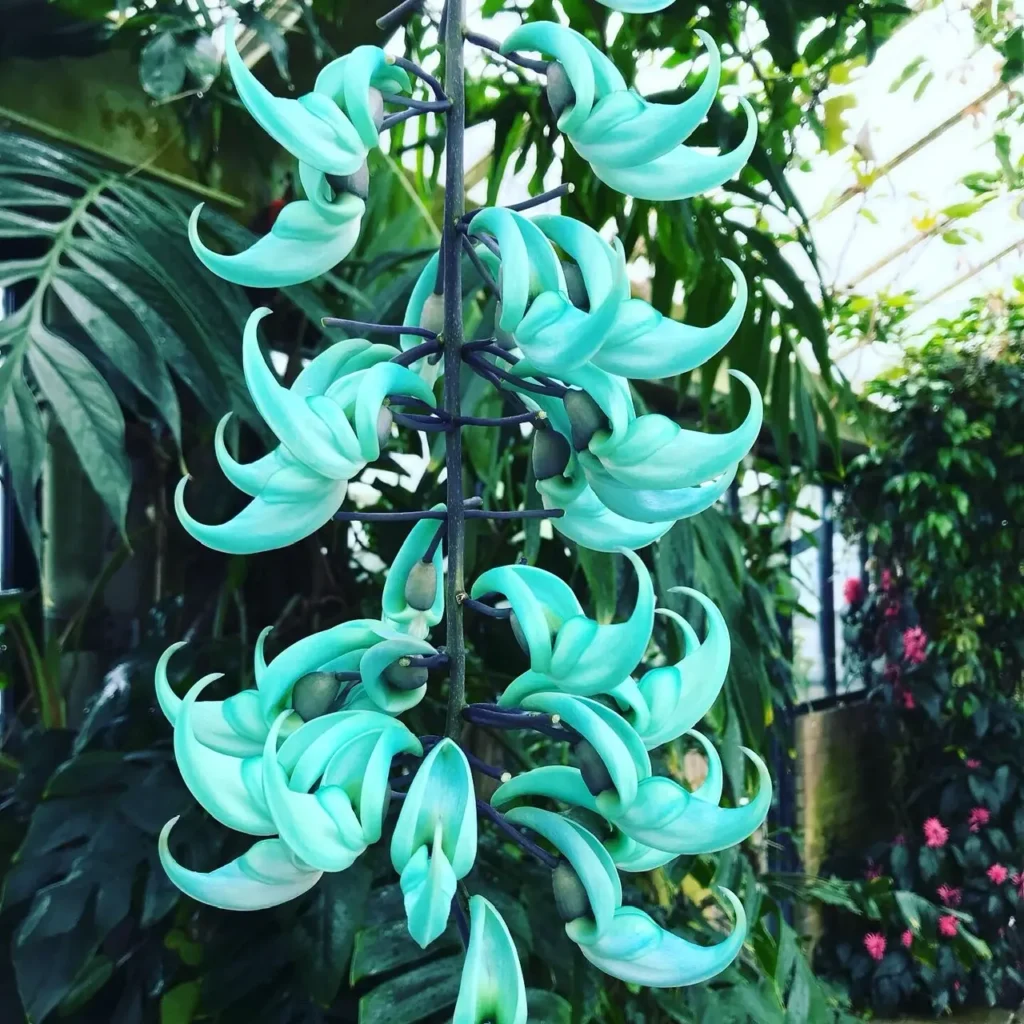
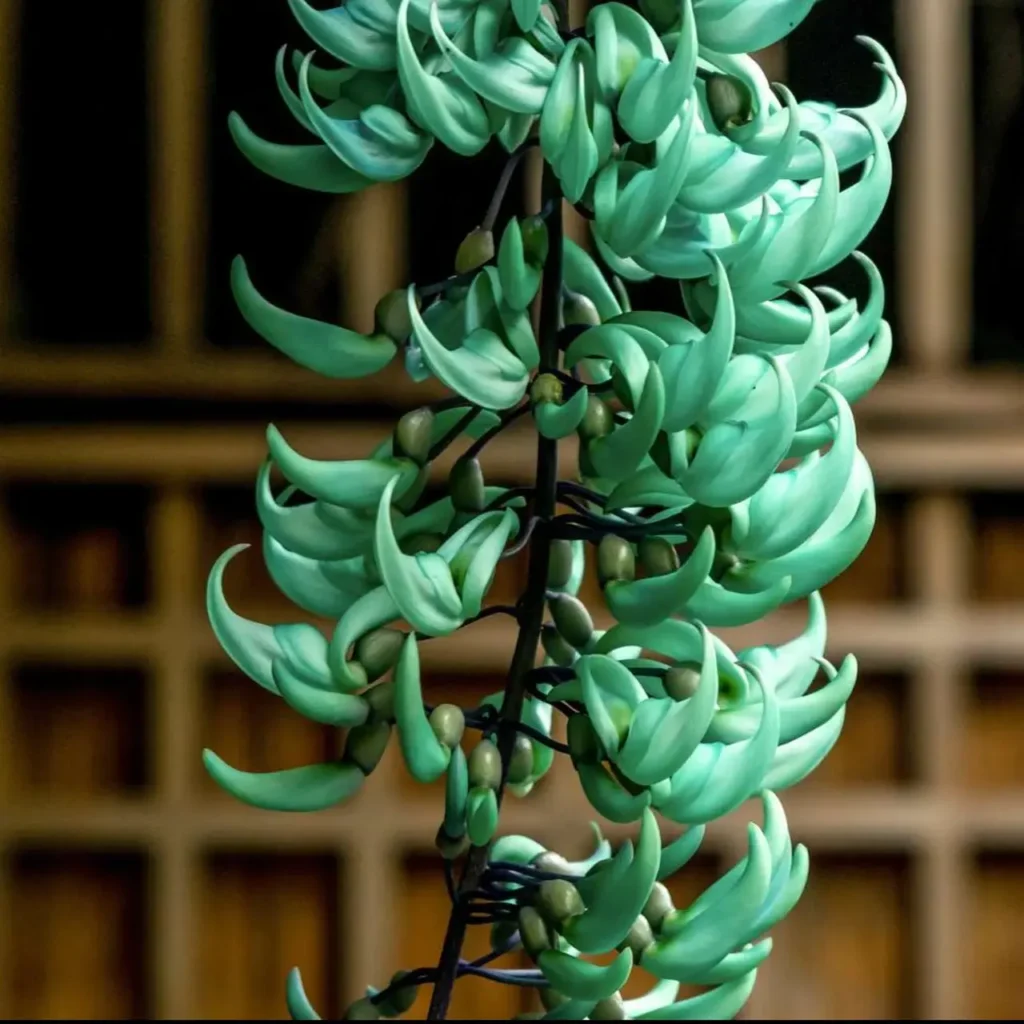
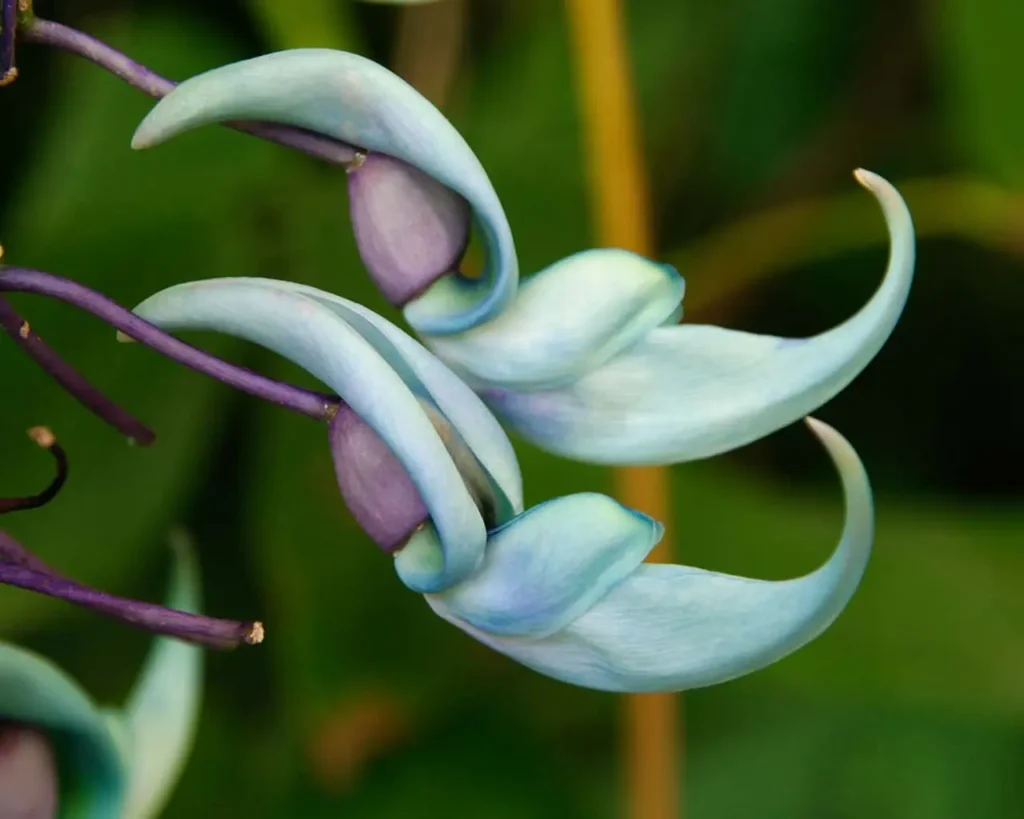
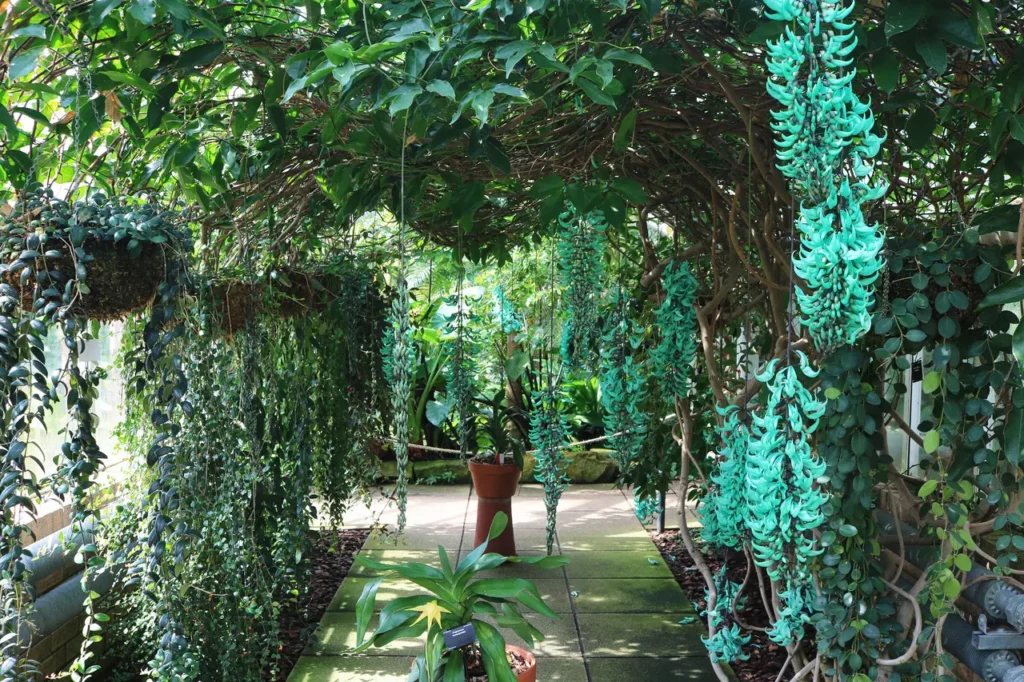
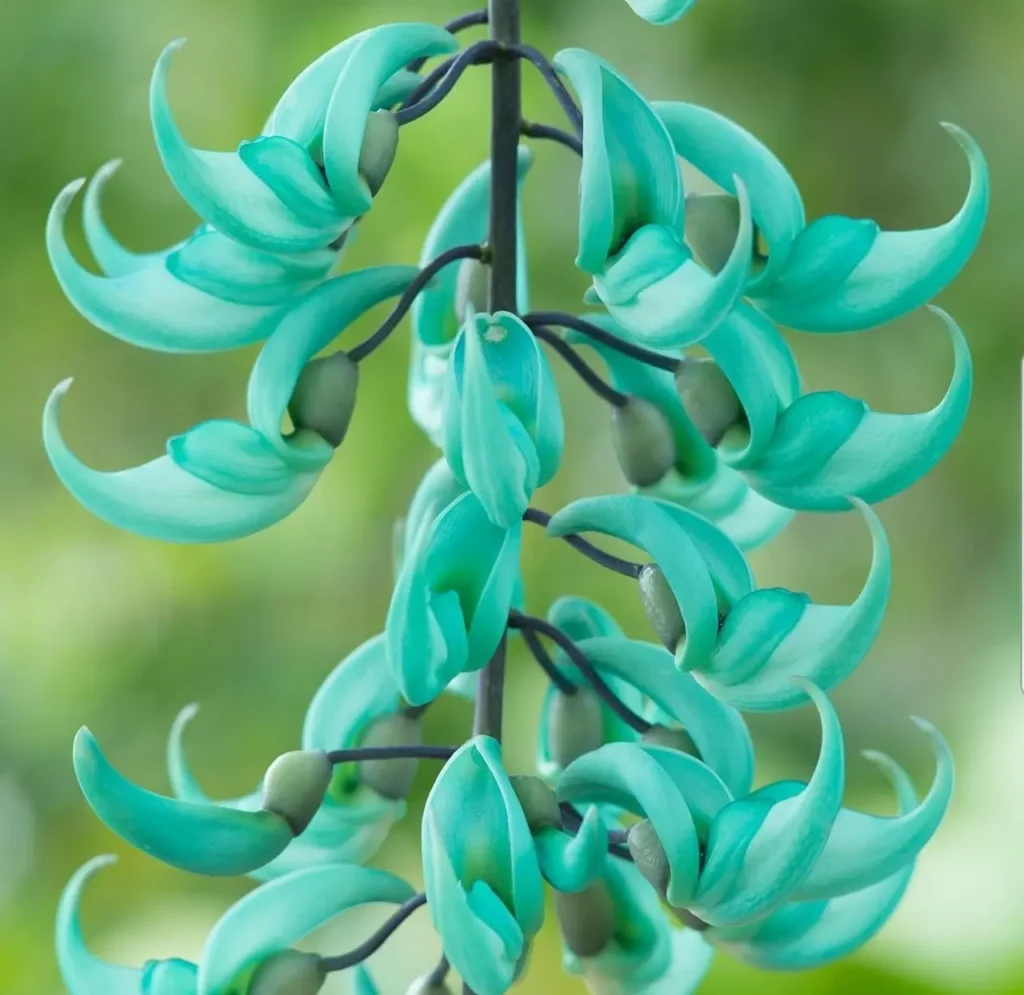
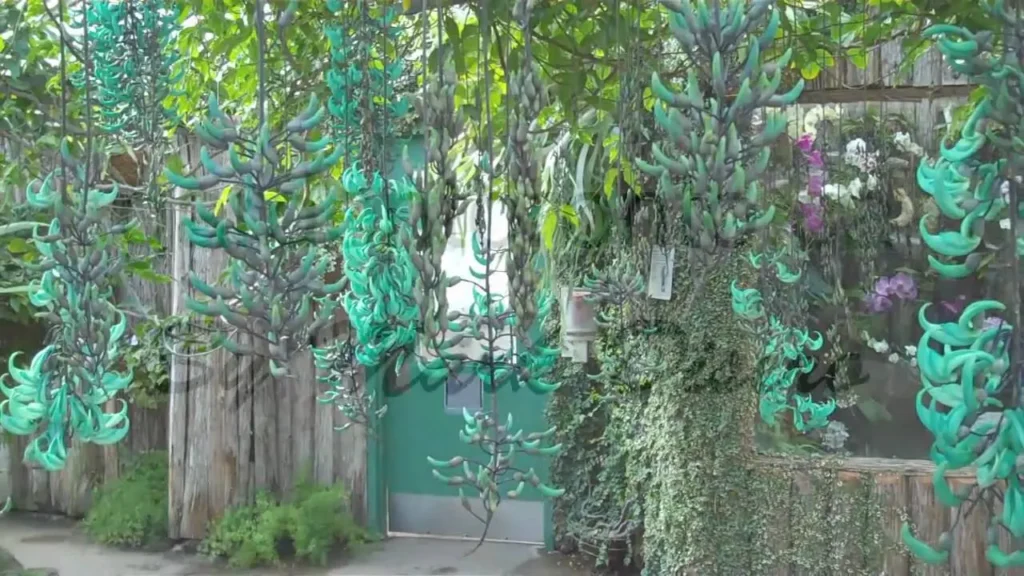
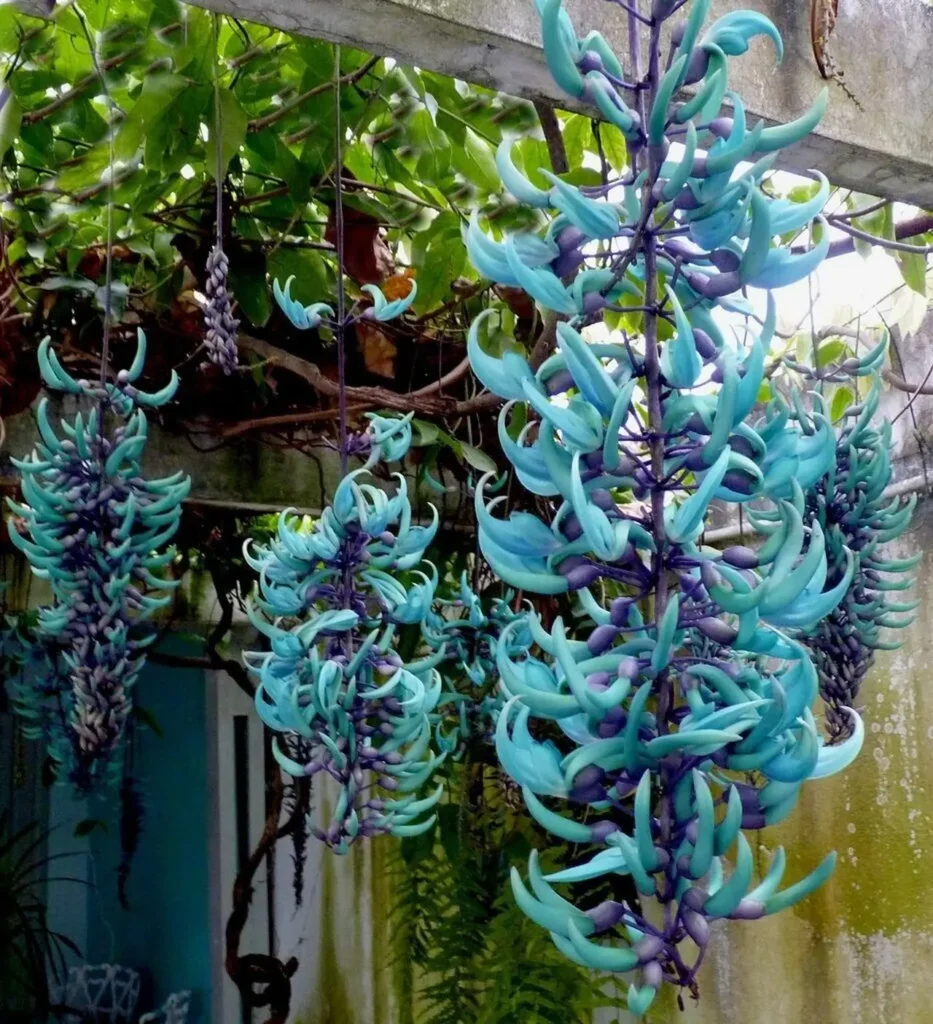
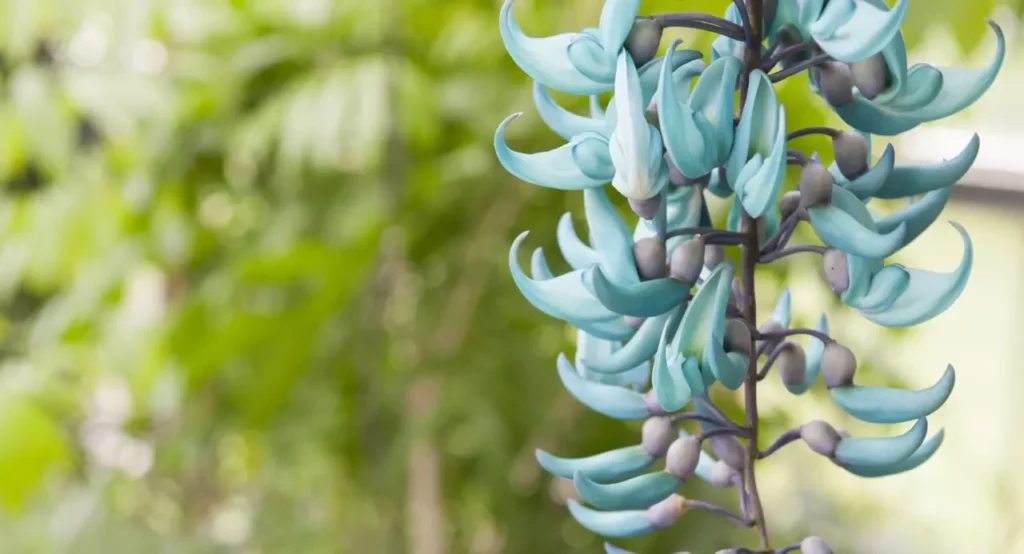
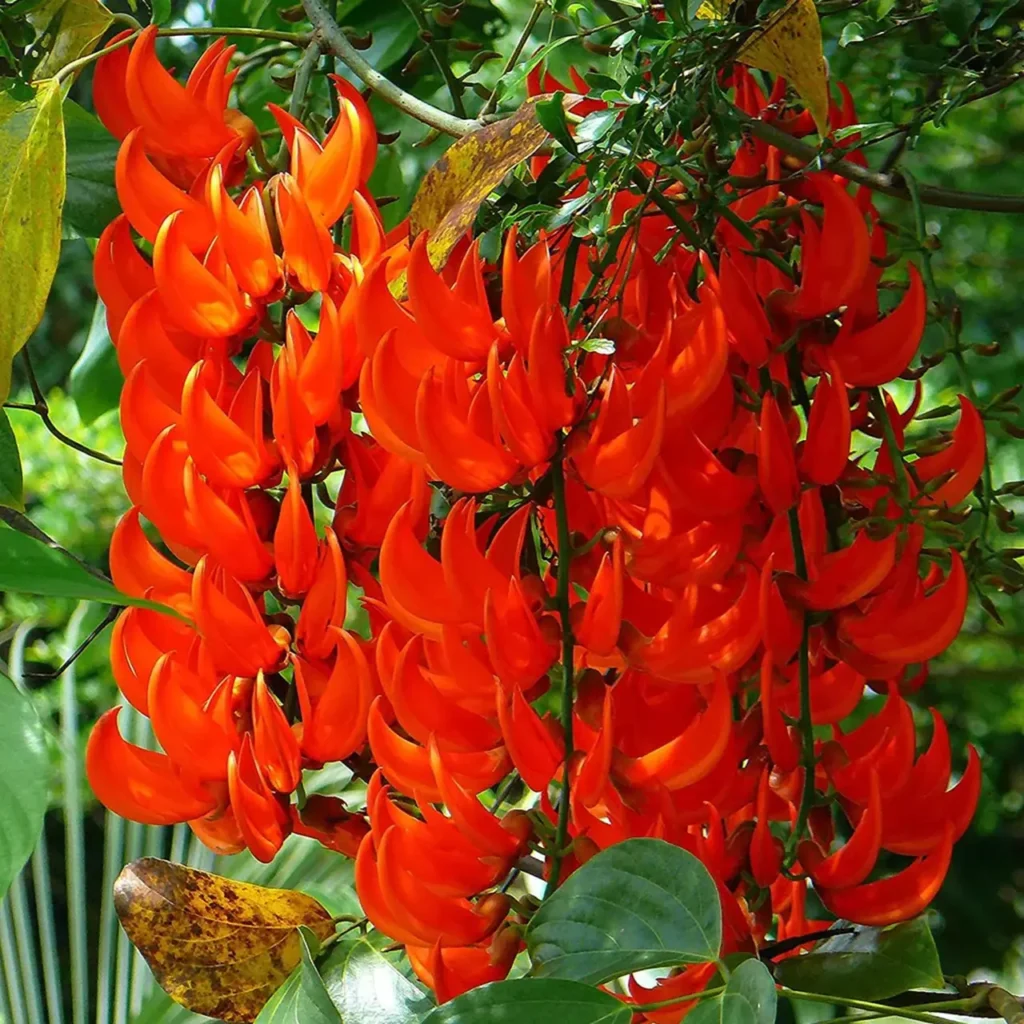

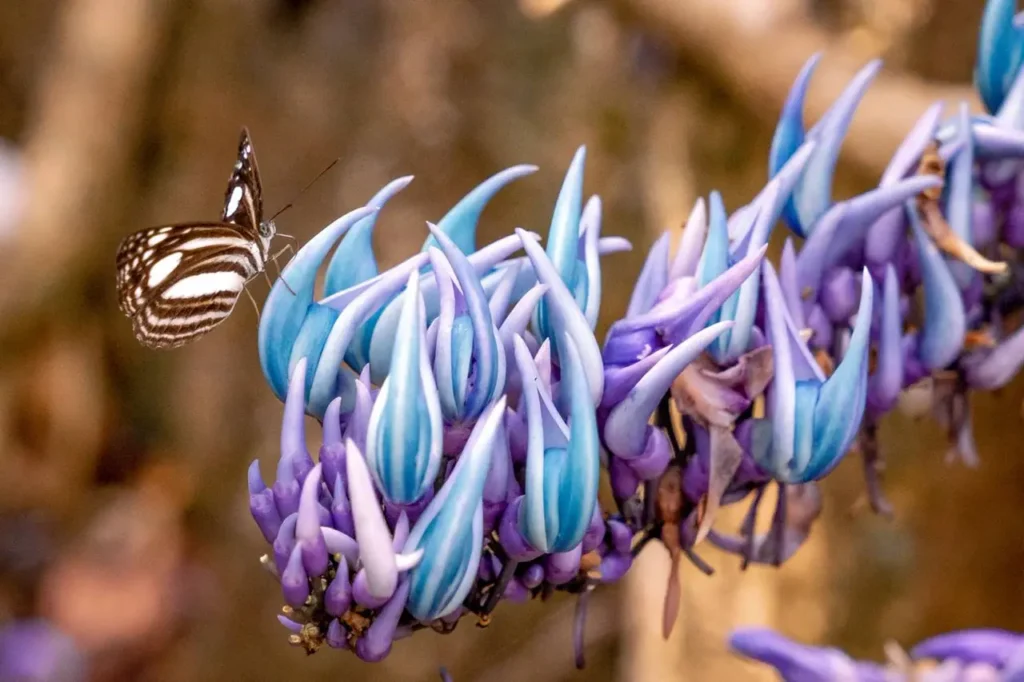
Origin and Habitat
Strongylodon macrobotrys is native to the tropical forests of the Philippines, specifically found in the islands of Luzon, Samar, Leyte, and Mindanao. In its natural habitat, it thrives in the understory of dense rainforests, where it clambers up trees and other vegetation to reach sunlight. The vine’s specific requirements for growth and pollination make it a relatively rare sight even in its native range.
Appearance and Characteristics
The most striking feature of the Jade Vine is undoubtedly its dazzling flowers. The pendulous inflorescences can grow up to 3 feet (approximately 1 meter) long, resembling cascading clusters of jade-green or turquoise-blue flowers. The vine’s unique color is attributed to its high copper content, setting it apart from most other flowering plants.
The flowers of the Jade Vine have a peculiar claw-like shape, which is specially adapted for pollination by bats. As in many tropical rainforests, bats play a crucial role in pollination due to their nocturnal activities. The vine’s large, sturdy, and bat-friendly blooms ensure successful pollination by providing a suitable platform for the nectar-feeding mammals.
The color of the Strongylodon macrobotrys
The Strongylodon macrobotrys, or Jade Vine, is indeed a fascinating plant with more noteworthy characteristics:
- Endangered Species: The Jade Vine is considered a vulnerable species in its natural habitat due to habitat destruction and deforestation. Conservation efforts are in place to protect this beautiful plant from further decline.
- Native Range: The Jade Vine is native to the Philippines, where it thrives in the tropical forests. It is specifically found in the islands of Luzon, Polillo, Catanduanes, and Samar.
- Unique Pollination Mechanism: The Jade Vine has an interesting method of pollination. It is primarily pollinated by bats in the wild, which are attracted to the plant’s vibrant blue-green flowers. As the bats feed on the nectar, they inadvertently transfer pollen from one flower to another, facilitating pollination.
- Spectacular Inflorescence: The flowering clusters of the Jade Vine can be quite massive, measuring several feet in length. Each inflorescence is composed of numerous individual flowers tightly packed together.
- Ornamental Value: Due to its striking color and unusual appearance, the Jade Vine is often cultivated as an ornamental plant in botanical gardens and conservatories around the world. Its striking blooms make it a prized addition to any collection of rare and exotic plants.
- Climbing Habit: Strongylodon macrobotrys is a vigorous climber. In its natural environment, it can be seen scaling tall trees in the forest canopy. In cultivation, it requires sturdy support or trellising to allow its vines to climb and display its impressive floral cascades.
- Ethnobotanical Uses: Some indigenous communities in the Philippines have traditional medicinal uses for parts of the Jade Vine. For instance, the roots are believed to possess certain healing properties.
- Propagation Challenge: Propagating the Jade Vine can be challenging because it is not easy to produce seeds through natural pollination in non-native environments. Additionally, its growth conditions need to be carefully replicated for successful cultivation.
Overall, the Strongylodon macrobotrys, or Jade Vine, is a true botanical wonder, admired for its mesmerizing color, unique pollination, and delicate beauty. Efforts to conserve this remarkable species are vital to preserving its presence in the wild for future generations to enjoy.
Conservation Status and Challenges
While the Strongylodon macrobotrys is not classified as critically endangered, it is considered a vulnerable species due to habitat destruction and over-collection. The encroachment of human settlements and deforestation for agricultural purposes threaten the natural habitat of this remarkable plant. Conservation efforts are underway to protect the Jade Vine and its fragile ecosystem.
Cultivation and Horticultural Interest
The cultivation of Strongylodon macrobotrys outside its native range poses certain challenges due to its specific environmental requirements. However, some botanical gardens and enthusiasts have successfully grown the vine in controlled environments. In these settings, the Jade Vine continues to awe visitors with its captivating beauty, attracting attention to its conservation needs.
For successful cultivation, the Jade Vine requires a warm and humid climate, similar to its natural habitat. It thrives in well-draining soil with plenty of organic matter, and partial shade is preferred to avoid direct sunlight, which may cause leaf burn. Gardeners often employ trellises or other support structures to accommodate the vine’s climbing nature.
Ethical Considerations for Cultivation
As the popularity of the Jade Vine grows, it is essential to address ethical considerations surrounding its cultivation and trade. Ensuring that plants are ethically sourced and propagated through sustainable means helps support conservation efforts and preserves the genetic diversity of the species.
Strongylodon macrobotrys, the Jade Vine, is an enchanting botanical wonder that continues to captivate all who encounter it. With its rare turquoise-blue blooms and fascinating adaptations for bat pollination, this climbing vine remains a testament to the extraordinary beauty and complexity of nature. By appreciating and supporting the conservation of the Jade Vine, we can contribute to the preservation of not only this remarkable species but also the rich biodiversity of tropical rainforests around the world.







